HELPING YOU DRIVE SAFELY FOR LONGER

Safe, practical –and fun!
BUY THE RIGHT CAR MOTORING ON A BUDGET
Easy ways to cut your fuel and insurance costs
LIFE AFTER DRIVING
How to stay active and mobile


Safe, practical –and fun!
BUY THE RIGHT CAR MOTORING ON A BUDGET
Easy ways to cut your fuel and insurance costs
LIFE AFTER DRIVING
How to stay active and mobile
In front of the camera and behind the wheel, actor Jack McKenzie has led an exciting life


PEOPLE LIVE TO A GREATER
MORE OF US ARE DRIVING
At last count there were nearly 800 people over 100 with a valid driving licence.
It’s very reassuring for those of us who dread the thought of losing our licence and the freedom our car gives us. It may happen... none of us know. But it doesn’t need to be as bad as we may think. We might discover a local bus or train, friends and family will often be there to help, and maybe a bit more walking might be good for us.
Getting into bad habits can be a problem the longer we are on the road. A few years ago,
I took a driver assessment course through the GEM Motoring Assist breakdown provider in my own car and on roads I know. Whatever the outcome there was no risk of losing my licence. It was invaluable and has greatly increased my confidence in my car.
I do hope you find the advice in DriveOn useful however you choose to stay mobile in the future.
VALERIE SINGLETON TELEVISION AND RADIO PRESENTER
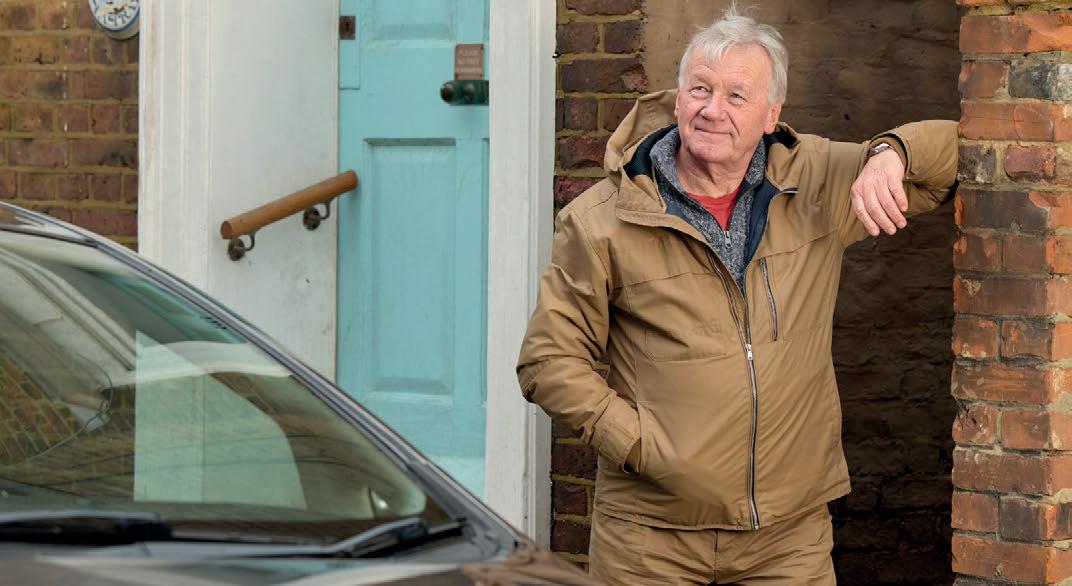

Publisher: James Evans
Editor: David Motton
Art Director: Caroline Creighton-Metcalf
Contributors: James Barrell, Richard Dredge, Dan Sherwood
Commercial Director: Richard Storrs
Photography: Richard Faulks and Matt Howell
CONTACT: driveon@firstcar.co.uk


Disclaimer:
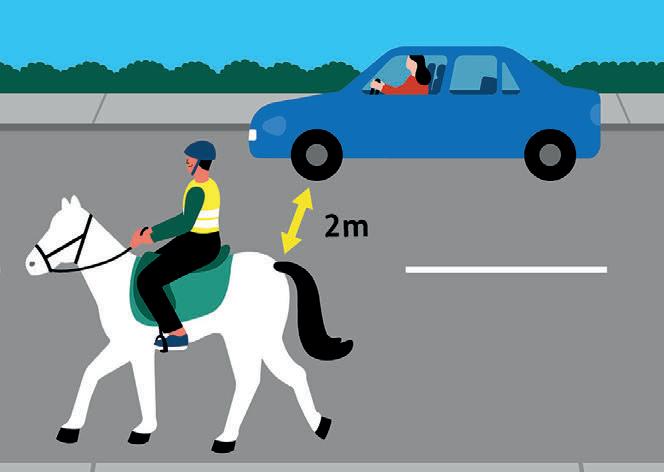
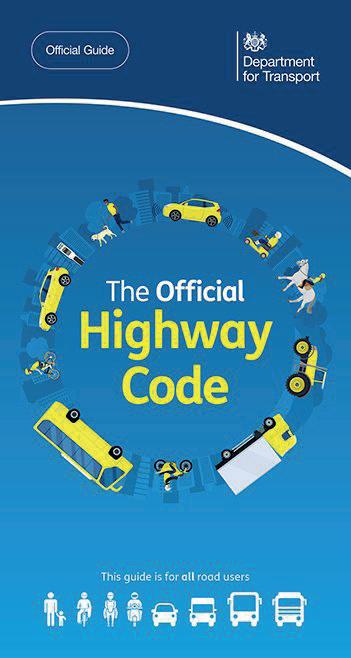

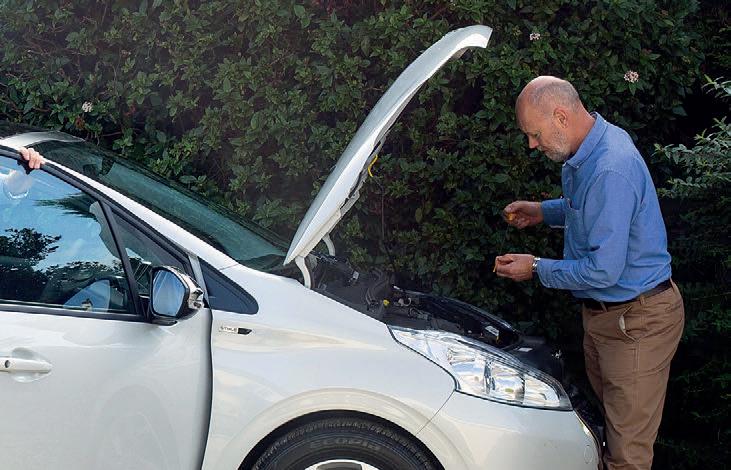
6: Interview: Jack McKenzie
10: Renewing your licence
12: Refresher driving courses
16: Cut your fuel bill
18: The Highway Code
22: The A-Z of car technology
24: Avoiding distractions
25: The importance of seatbelts
26: Appropriate speed
27: How to combat fatigue
28: Child seats and ISOFIX
30: Drink and drugs
32: Eyesight and visibility
34: The Blue Badge scheme
36: Motability explained
38: Choose the right road
42: Buy the right car
Understand electric cars
Save on your insurance
Maintenance essentials
Your collision checklist

to be 5’10 or 5’11” at that time.”
Fortunately, Jack’s colonel had a solution. “I know a little chief constable – you’ll tower above him.”
Jack met the chief constable of the Lothian and Peebles Constabulary, and sure enough he was taller. “His name was Willie Merrilees and he went on to write a book called The Short Arm of the Law. Within a couple of years, I’d become the chief’s driver, but first of all I had to pass my driving test.
“In those days, 1961, you had to learn to drive in the police van. You could be carrying
anything from prisoners to bodies – even animals.”
Once Jack had his driving licence, he took another test to join the traffic department, eventually becoming the chief constable’s personal driver. This role would lead to a chance meeting and another change of direction.
“My chief constable was a great patron of disabled and disadvantaged children. Now, when Disney finished the film, Grey Friar’s Bobby, the chief constable adopted the dog. We would take the dog in our patrol car to visit all these kids – Bobby was a great favourite. I must have been the only police officer in the world to have a real live nodding dog in the backseat of the patrol car!”
One event supported by the police and their adopted canine star was an annual picnic. “The taxi drivers organised it for kids from homes and disabled children. We used to escort cavalcades of taxis with balloons and streams down to the beach.”
It was at one of these picnics that fate grabbed the steering wheel and steered Jack in a new direction. “The kids were getting a bit bored and I thought, what can I do? So, I did some funny voices and the kids fell about laughing.
“This man came across to me and said, ‘How long have you been doing this?’ I thought he meant being in the police. He said, ‘I’m a BBC producer, could you do those voices on the radio?’”
Jack wasn’t sure at first. “I said, ‘Hold on a minute, I’m not an actor, I’m a policeman.’ But the producer was a great friend of the chief constable, and I was allowed to do some radio work in my own time. It was on the condition that any money went to charity, because in those days you couldn’t
We were doing all the things that young men should do — swimming, jumping, running
have another job if you were in the police.”
The acting bug bit, and bit hard. Jack progressed from doing funny voices to a walk-on part in a film as a bobby directing kids across the street – not a huge stretch for the acting skills of a policeman!
“Being in the city of Edinburgh with the famous Edinburgh Festival, there were hundreds of productions all looking for people to help. I got involved in that, met other actors, and did bits and pieces on television.”
Jack was at a crossroads. Did he stay in the police and continue to act on the side, or should he pursue an acting career and see where it led him?
“It was 1972. I couldn’t see promotion coming my way, so I thought, ‘I’ll have a go at this.’ I caught the 5.45 flight from Edinburgh to London and never went back.”
An actor friend recommended an agent, and Jack went to see them when he arrived in London. “This tall woman came and said, ‘I’m looking for a beery face for a Guinness commercial. You’ll do.’ So I got the job!”
As Jack’s acting career took off, his driving skills came in handy as art imitated life. “I became Regan’s driver in The Sweeney. And then we did Return of the Saint, and they said, ‘Can you crash through that gate?’ Then I appeared in several car commercials for Saab, Ford, and Renault, so driving played quite a big part in my career.”
A part in the sci-fi TV series, Space 1999, followed, where he met his future wife, Rosemary (who also appears on the cover of this edition). “That was 1974. She was in the production and casting department. She and I had tea and that was the last time I saw her for 21 years!”
Although Space 1999 is a cult classic, a role in a much bigger sci-fi project was to come a few years later. Jack’s agent booked him for “a space thingy”, which turned out to be The Empire Strikes Back. The second film in the Star Wars saga, Empire became the highest grossing film of 1980.
After weeks of waiting around, Jack’s

moment came. “The director asked me, ‘Can you do an American accent, Jack?’”
As we speak, Jack’s voice switches from a gentle Edinburgh brogue to an American twang, and he delivers his character’s dialogue. “Sir, all the patrols are in. Still no… still no contact from Skywalker and Solo.”
Appearing in the biggest film of the year was a long way from doing funny voices for children on the beach. “Think of all that money behind the camera that was staring at me! Oh, wow!”
Some 45 years later, Jack still attends Star Wars conventions all over the world, as well as meeting fans of Space 1999 and Blake’s 7. His sci-fi roles aren’t the only parts which Jack remembers fondly. Look closely enough, and you’ll see the back of Jack’s head in several scenes in the classic war film, A Bridge Too Far. “You could play different roles in different scenes,” he
In
Edinburgh with the festival there were hundreds of productions looking for help
If the time comes when I think, hold on a minute, I can’t do this anymore, I’ll stop
explains, “but we had to conceal our faces because once you had been featured you were sent home!”
The film’s director, Sir Richard Attenborough, invited Jack to join him on another project. “Some years later, he said ‘I’m doing Gandhi, darling, come out to India.’ I flew out to play my part as the Royal Army Medical Corps doctor.
“Have you seen Gandhi? The funeral scene is just remarkable. There was catering planned for 180,000 and almost half-amillion people turned up. Everyone was paid and everyone was fed!”
Jack has appeared on stage as well on screen. The production he looks back on with the greatest fondness is a touring production of Dirty Dancing. “I played Max Kellerman, the owner of the establishment. The first tour was in 2011 and 2012 and they invited me back in 2019. It was just a huge pleasure, the young people were wonderful to work with.”
Now in his 80s, Jack has slowed down a little but is continues to be in demand on the convention circuit. He’s still behind the wheel, too, putting into practice the skills he learned as a police driver in Scotland all those years ago.
Has he changed much as a driver? “I would say I’m more cautious. I know my limitations. If the time comes when I think, hold on a minute, I can’t do this anymore, I’ll stop.”
Incidents which Jack attended as a policeman, including some fatalities, have left their mark and contributed to his considered, safety-first approach to driving. “As long as you are careful and alert you’ll get there safely.”
Does Jack enjoy driving in his 80s? “Oh, I love it,” Jack says. “The sheer convenience and freedom is still appealing.” ❑
Jack has his police driver training to fall back on, but many of us have never sat beside an instructor since the day we took our test.
Whether you have enjoyed further training or not, it’s never a bad idea to call on a professional’s help. There’s a wide variety of driver assessments available, ranging from simple sessions to boost confidence through to detailed appraisals for those with specific medical conditions or disabilities.
One of the best known is the IAM RoadSmart Mature Driver Review. This costs £85 and will be carried out in your own car on roads that will be familiar to you. Turn to page 12 to find out more about driving courses for mature drivers.

Mark your 70th birthday by renewing your driving licence. It’s doesn’t take long and it won’t cost a penny
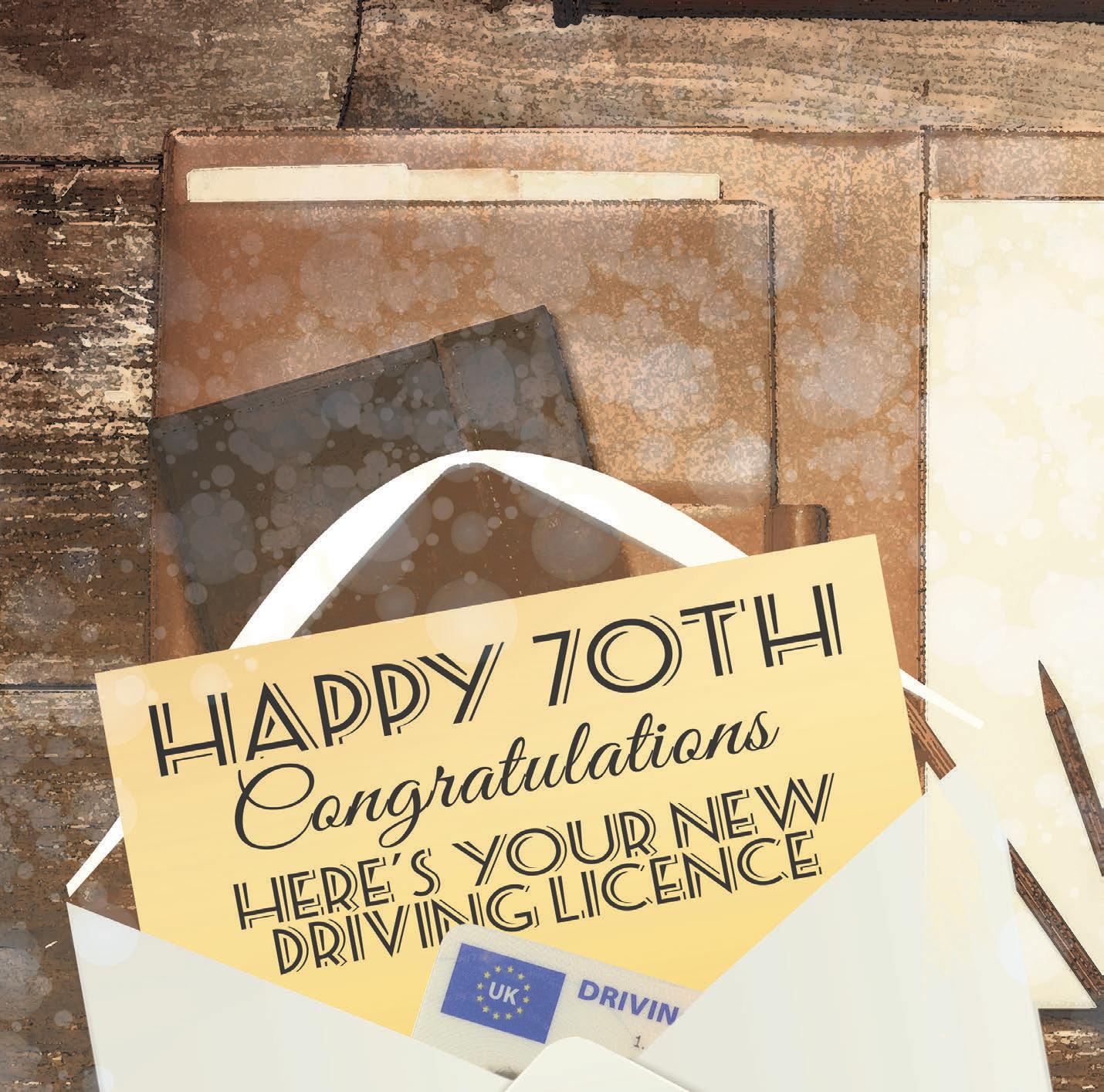
It’s hard to believe that it’s more than half a century since you were first old enough to drive a car. But time flies, and if you’re nearing your 70th birthday, you might be alarmed to hear that your driving licence is about to expire. But there’s no reason to panic – everybody’s driving licence expires when they hit three-score years and ten, and it’s simply a case of reapplying for it, free of charge. After this you’ll have to renew it every three years to make sure you’re still legally allowed on the road.
Renewing your licence requires you to declare that you’re still fit to drive; there’s no need for a health professional to agree with you. But for the safety of yourself and those around you, it’s worth talking to your GP each year to make sure they think you’re still fit to get behind the wheel. And just to be certain, why not undertake a refresher driving course (see page 12)? Even if you don’t go this far – and we’d recommend you do – it’s well worth getting your hearing and eyesight checked each year.
If you need to share your driving licence details you can do so by generating a licence check code online at gov.uk/view-driving-www. licence

The DVLA will send you a D46P application form 90 days before your 70th birthday. If you already have a photocard licence, just fill in the form and return it to the DVLA. Your new licence should be with you within three weeks, and you can drive while
If you’re web savvy, you can save time by applying online
Not just at 70...
It’s not just when you reach 70 that you need to renew your licence. If you move house or change your name, your licence will need to be updated.
Photocard driving licences have been issued in the UK since 1998. Unlike the earlier licences, these have a 10year lifespan (to keep the photo up to date) – and if you don’t renew yours after 10 years, you’re liable for a £1000 fine. However, you’re more likely to receive a £100 penalty – but you won’t get one at all if you renew in good time.
Since 8 June 2015, the paper counterpart to photocard licences has been abolished, so if you update your details you can expect a photocard licence with no counterpart. Likewise if you have an old paper licence, issued before 1998, you’ll receive a photocard if you update your licence.

you wait for the new licence to arrive.
If you still have your old paper licence, you’ll have to fill in the form and send it back with your current licence, a passport photo, and proof of identity. If you don’t have the D46P form, you can use the D1 form, which you can request by ringing 0300 790 6801 or by going to a post office.
If you’re web savvy, you can save time by applying online at www.gov.uk/ renew-driving-licence-at-70. Your new licence should arrive within a week. ❑
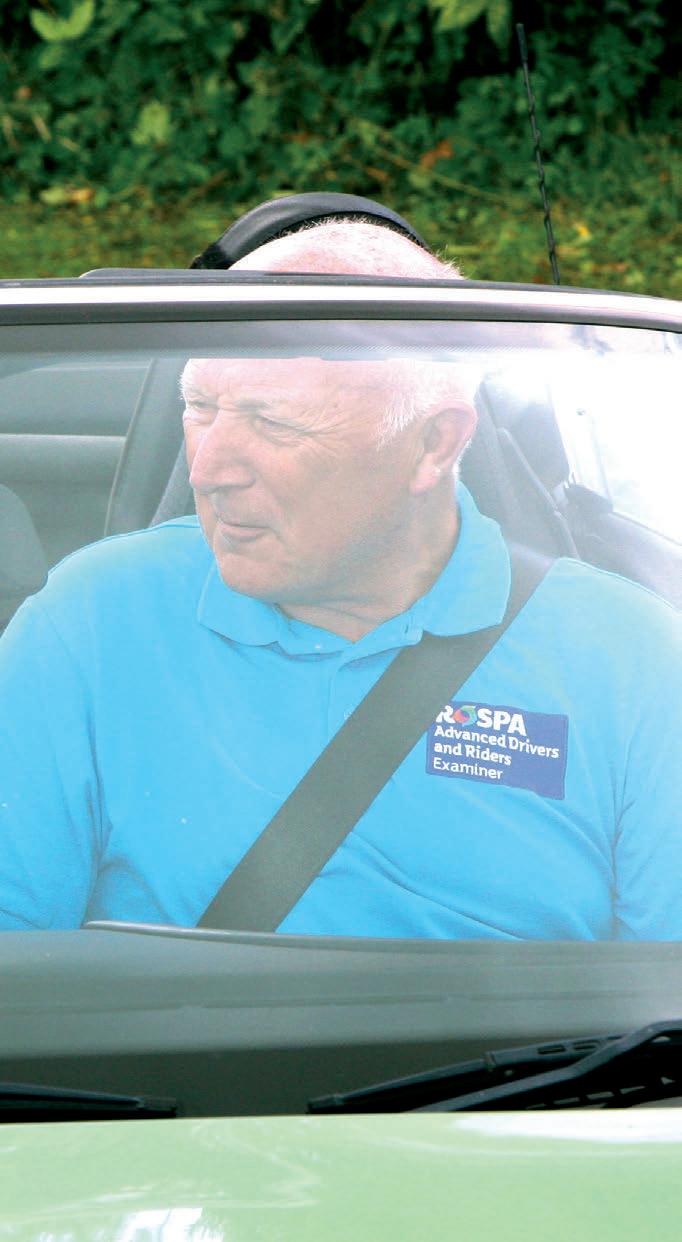
Age is no barrier to learning. A driving course will improve your driving. Here’s a quick guide to what’s on offer...
IAM RoadSmart Mature Driver Review
What is it?
An hour’s drive with a verbal/written report. How much does it cost?
£85.
Is it specifically for older drivers? Yes, drivers should be 70 or over. How can I find out more?
Call 0300 303 1134 or visit www.iamroadsmart.com
RoADAR Driving Review
What is it?
It’s not a formal test, but the hour-long assessment will give an honest evaluation of your skills. You’ll receive a verbal and written report after the drive.
How much does it cost?
£70, or £85 within the M25. Is it specifically for older drivers?
The assessment is for anyone who wants to prove they are a competent driver, or wants the reassurance of an independent check on their driving. It’s not just for older drivers.
How can I find out more?
Call 0121 248 2099 or visit www.rospa.com
AA Driving School refresher lesson
What is it?
A refresher lesson is for a driver who would like to improve their skills, or address an aspect of driving they struggle with.
How much does it cost?
familiar roads to help put you at ease. IAM RoadSmart is happy for a friend or family member to come along for the ride to lend some moral support.
After the hour-long drive the assessor will prepare a confidential written report. Drivers reaching a high standard will also receive a certificate recognising ‘Excellent’ The number of drivers aged 70 or more is growing at a rate of 10,000 per month, according to
AA lessons vary in price, and the refresher lesson lasts at least two hours. Expect to pay around £90.
Is it aimed specifically at older drivers?
No, the lessons are for any qualifed driver, not just older motorists.
How can I find out more?
Visit www.theaa.com

help or signpost you to the right person or organisation.”
Mature drivers have a wealth of experience, confidence and tolerance. However, sight, hearing, reaction time and judgement of speed and distance may not be as sharp as they once were.
The forum is passionate that none of us become complacent about our driving but take steps to make sure we are safe to drive, as long as we are fit to do so.
HERE ARE FOUR THINGS YOU CAN DO TO HELP YOURSELF CARRY ON DRIVING SAFELY FOR LONGER:
1 Have a regular eyesight test with an optician (see page 32).
2
Check with your doctor regarding any medical condition, or your pharmacist about any medication that you take to make sure you are fit to drive.
3 Don’t be complacent about your driving. Consider an independent mature driving assessment.
4 We will all need to retire from driving at some point. Seek advice to help you plan when the time is right for you.
The forum’s website is full of practical information and tips, including how to renew your licence, how to identify eyesight and medical conditions, and where to book a confidence-boosting assessment to refresh
The forum is about keeping mature motorists on the road safely
driving skills. You’ll also find advice about more formal assessments for those with a medical condition that may affect their ability to drive.
The forum regularly run events and webinars. Many are recorded and can be found on the website for drivers to watch at any time.
So do dip in and take a look! Also register to receive regular updates on the forum’s activities by clicking on the website’s ‘follow’ button.
Don’t worry, the forum does not perform any legal function, and does not have the authority to revoke driving licences.
It works nationally with road safety organisations, the Department for Transport, and other government departments, constantly seeking the most effective means to support safer driving into older age.
REMEMBER, THE OLDER DRIVERS FORUM IS HERE TO HELP:
✔ With practical advice on how to keep driving safely for longer.
✔ Planning an independent life without a car when the time comes.
✔ Giving advice and support to families and carers concerned about a mature driver.
Visit www.olderdriversforum.com.

Electric cars are increasingly popular. They may not be cheap to buy but the cost of fully charging an electric car’s batteries is much less than a tank of fuel.
Choosing an efficient car and driving with economy in mind can make a dramatic difference to
Most drivers know to take a car’s official combined economy figure with a pinch of salt. It’s often difficult to achieve similar fuel efficiency in real-world driving. The trouble is, not all cars fall short of the official figures by the same amount, so how do you know which cars will really save you money at the pumps?
A company called Emissions Analytics has been carrying out its own independent testing of fuel economy and emissions since 2011. Cars are tested on a variety of road types and gradients. As the car drives along, its exhaust gases are measured by a Portable Emissions Measurement System
your fuel bill
How do you know which cars will really save you money at the pumps?
(PEMS). The system also records vehicle data from the engine control unit and weather conditions. This allows Emissions Analytics to take account of variables such as temperature, road conditions and traffic levels to make sure that the test results are consistent and repeatable.
The real-world mpg figures for all the cars tested – covering thousands of models – are now available on Airindex.com. ❑
There have been some big changes to the Highway Code intended to protect vulnerable road users. Here’s what you need to know

You can do a lot more harm with an HGV than a small hatchback. And a hatchback can do a lot more damage than a child crossing the road. That’s now reflected in the Highway Code.
Lots of changes were made in a big update in January 2022. Some existing rules have been tidied up or clarified, but the guiding principle is the ‘hierarchy of road users’ –those who can do the greatest harm must take the greatest responsibility.
The likes of HGV
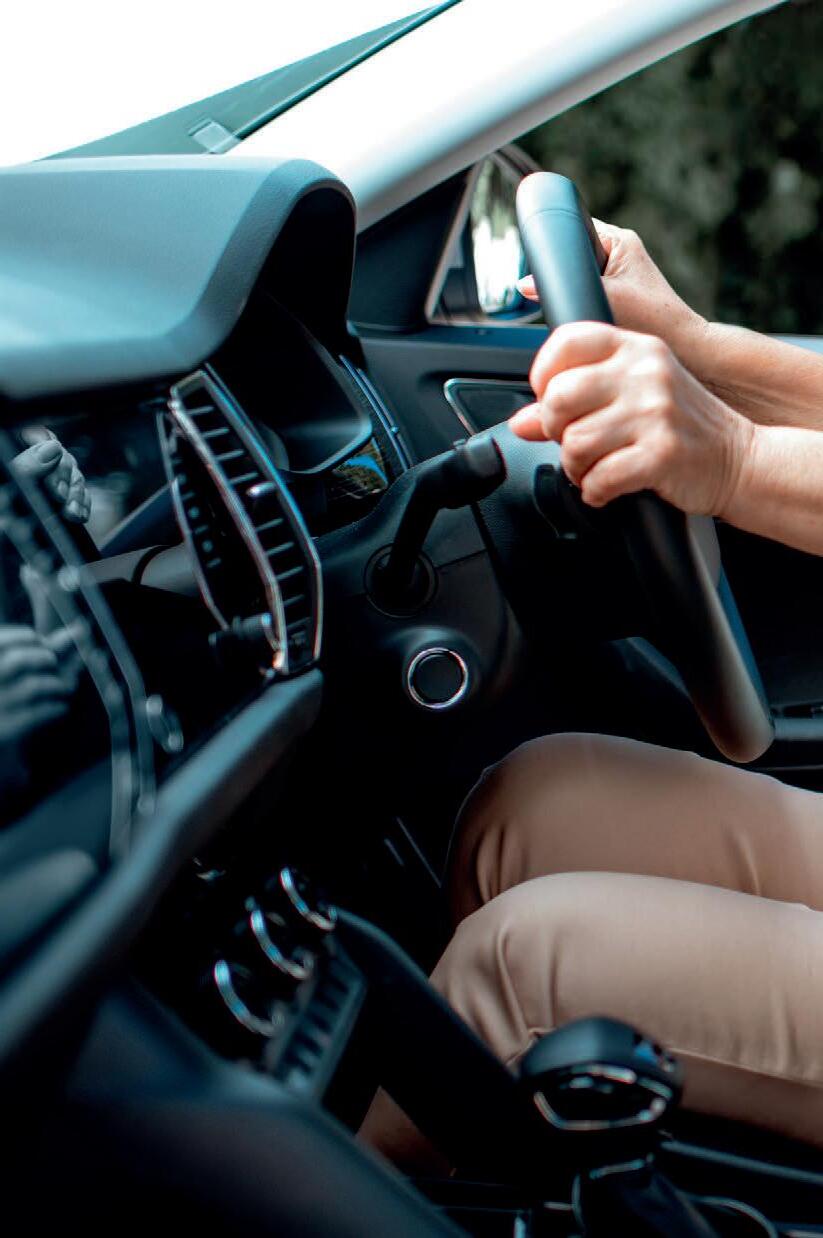
and coach drivers have the greatest duty to look out for other road users, because they’re driving the biggest, heaviest vehicles with the most potential to do damage. Pedestrians are at the opposite end of the hierarchy, as they’re likely to come off worst in any collision. Car drivers must take a great deal of responsibility, as although they are vulnerable to larger and heavier vehicles, they need to take extra care around horse riders, cyclists, and people on foot.
These rules are



DO give way to pedestrians who are crossing (or waiting to cross) the road at junctions.
DO give way to cyclists who are riding straight on when you are turning into or out of junctions.
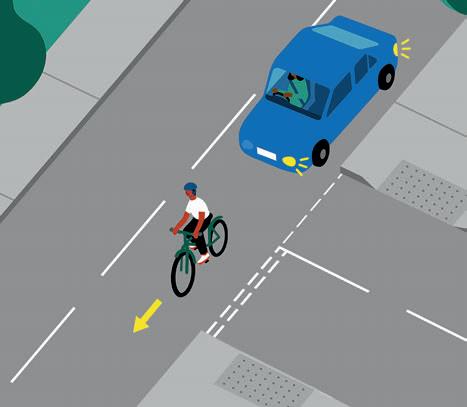

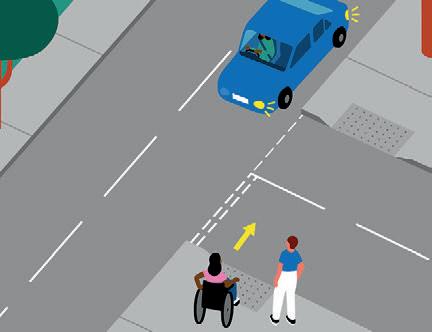
DO remember that cyclists are allowed to ride in the centre of the lane, or two abreast, while allowing you to overtake when it’s safe to do so.

DO use the ‘Dutch reach’ when opening a car door. This means using your left hand to open the driver’s door, which encourages you to turn towards the road, giving you a better view of any vulnerable road users such as cyclists who may be passing close to your car.
DON’T make a close pass on a cyclist. Leave at least 1.5 metres when overtaking cyclists at speeds of up to 30mph, and leave more space when overtaking above 30mph.


DON’T park against the direction of traffic at night, unless you are parked in a marked bay. This is because reflectors on the back of a car facing the wrong way won’t be picked up by the headlights of other vehicles, which could make a collision more likely.
DON’T pass close to a horse or a horse-drawn vehicle. Give at least two metres of space and overtake at no more than 10mph.
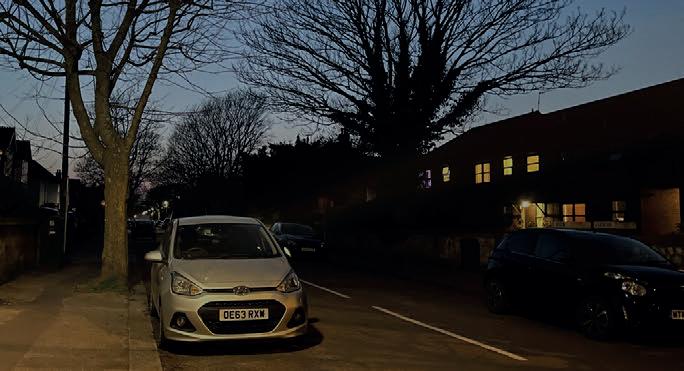
The changes to the Highway Code are a reminder that all road users have a responsibility to look after one another, in particular the most vulnerable ones: pedestrians, cyclists, other two-wheeled transport and horse riders. Edmund King, AA president
Don’t know your AEB from your ESP? Let us guide you through the safety technology fitted to modern cars
ABS Anti-lock Braking System (or simply anti-lock brakes). This prevents the wheels from ‘locking up’ under braking (the wheels are said to be ‘locked up’ when they are no longer turning but the car is still moving). By preventing lock ups, ABS ensures the driver is able to steer the car while braking heavily in an emergency.
ACC Adaptive Cruise Control. While regular cruise control keeps a car at a set speed, adaptive cruise control varies the speed to prevent the car becoming too close to the vehicle in front. It does this using sensors (often radar, cameras, or a combination of the two) which detect other vehicles and can measure how far away they are.

AEB Autonomous Emergency Braking. This uses sensors in much the same way as Adaptive Cruise Control, but can apply the brakes if the driver fails to do so to prevent a crash or at least reduce its severity. Some systems only operate at low speeds, but the best AEB systems are increasingly sophisticated and can operate over a wide range of speeds.
EBA Emergency Brake Assist (sometimes simply called Brake Assist). Even in an emergency, drivers can be reluctant to brake hard. EBA is designed to detect a ‘panic stop’ by interpreting the speed and force with which the brake pedal is pressed, and will apply the brakes fully, unless the ABS activates to prevent a lock up.

ESC/ESP Electronic Stability Control or Electronic Stability Program. By easing off the throttle or braking individual wheels, stability control systems help the driver maintain control if they corner too quickly for the conditions, leading to a loss of grip. Different car makers use different names for stability control, including ASC, DSC, DSTC, PSM, VDC, and VSC.
Lane Departure Warning System. Sensors detect if a car is drifting out of its lane when the driver isn’t indicating. The driver is alerted by a warning light, a sound, or a vibration through the wheel. A Lane Keeping System (LKS) goes further, gently steering the car to keep it in the lane.
Autonomous emergency braking is one of the biggest recent safety advances. There's a list of cars fitted with this technology at www.thatcham. org/files/pdf/stop_the_ crash_AEB.pdf
Supplementary Restraint System.
Quite simply, this is just another name for a vehicle’s airbags. They’re described as a supplementary system because they are intended to supplement seatbelts – so be sure to belt up on every journey.
Tyre Pressure Monitoring System. This keeps a check on the level of pressure in all four tyres, and warns if one or more tyres start to go flat. ❑
When you’re driving it’s easy to lose your focus for a moment or two. But doing so can have very serious consequences...
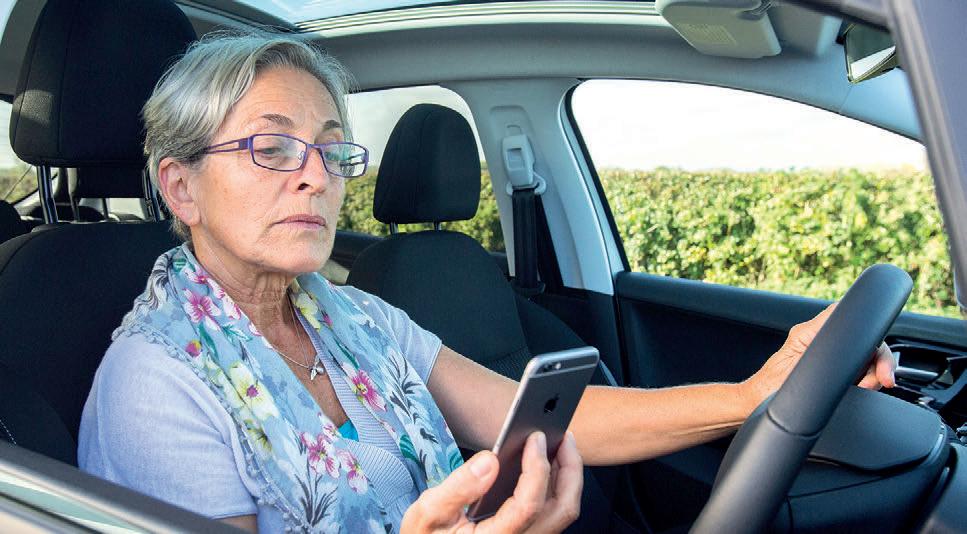
If we asked you to name the number one cause of car crashes, what would you say? Speed? Alcohol? Drugs? Statistics show that the biggest cause of accidents is, in fact, distractions. At 70mph you’re covering the length of a football pitch every three seconds, so even the shortest lapse in concentration can have deadly results.
Dealing with distraction
■ If you need to do something distracting, find a safe place to pull over.
■ Recognise what makes you distracted, then work out whether or not you really need to do it.
■ Concentrate on your driving – although this is sometimes easier said than done.
■ Make sure you’re ready to drive. After an emotional event, you might need time to calm down.
■ Plan your journey in advance, so you’re not having to work out your route as you go along.
THE PENALTIES.: If you’re convicted of careless driving or driving without due care and attention, you can be fined up to £5000 and get 3-9 points. ❑
The most common distractions...
Don’t want to crash your car? Then don’t do any of these things; they’re the most common distractions that cause car crashes.
■ Using a mobile phone
■ Changing music
■ Staring at an accident
■ Eating or drinking
■ Dealing with children
■ Chatting to a passenger
■ Having an argument
■ Lighting a cigarette
A FACT
One in seven residents of Watlington in Oxfordshire has points on their licence – the highest ratio in the UK, and twice the national average.

Driving above the speed limit risks a fine. Driving too fast for the conditions risks something far worse
Drive at 70mph on a motorway and you’re probably safe – but the same speed on a busy high street would lead to utter carnage. The problem is, things aren’t usually so obvious. On a blind brow, you can’t see what’s just over the horizon. On a twisty rural road you don’t know what’s just around the bend, whether or not there’s a tractor about to emerge from the field that’s fast approaching – or if a horse has just dumped its breakfast on the apex of the next corner. So while speed on its own won’t necessarily harm anyone, the wrong speed for the conditions could easily be lifechanging – for you as well as those around you.
THE PENALTIES.: If you’re not driving like an idiot, but you’re caught driving over the speed limit, you’ll be fined £100 and given three points. You might be offered a speed awareness course instead, typically for £100, but without the points. Not everyone gets the option, though, and you can attend only one course every three years. ❑
Don’t try to wriggle out of a fine by trying any of these excuses:
■ “I picked up a hitchhiker who said they liked my car. I let them drive the vehicle. I don’t have their name or address.”
■ “My car was stolen overnight and returned to the same point. I didn’t report it, as the first thing I knew was when a summons turned up.”
■ “I was in the airport’s flight path and I believe the camera was triggered by a jet overhead.”
If your eyes start to feel heavy when you’re driving, battling on regardless could prove to be a very bad decision...
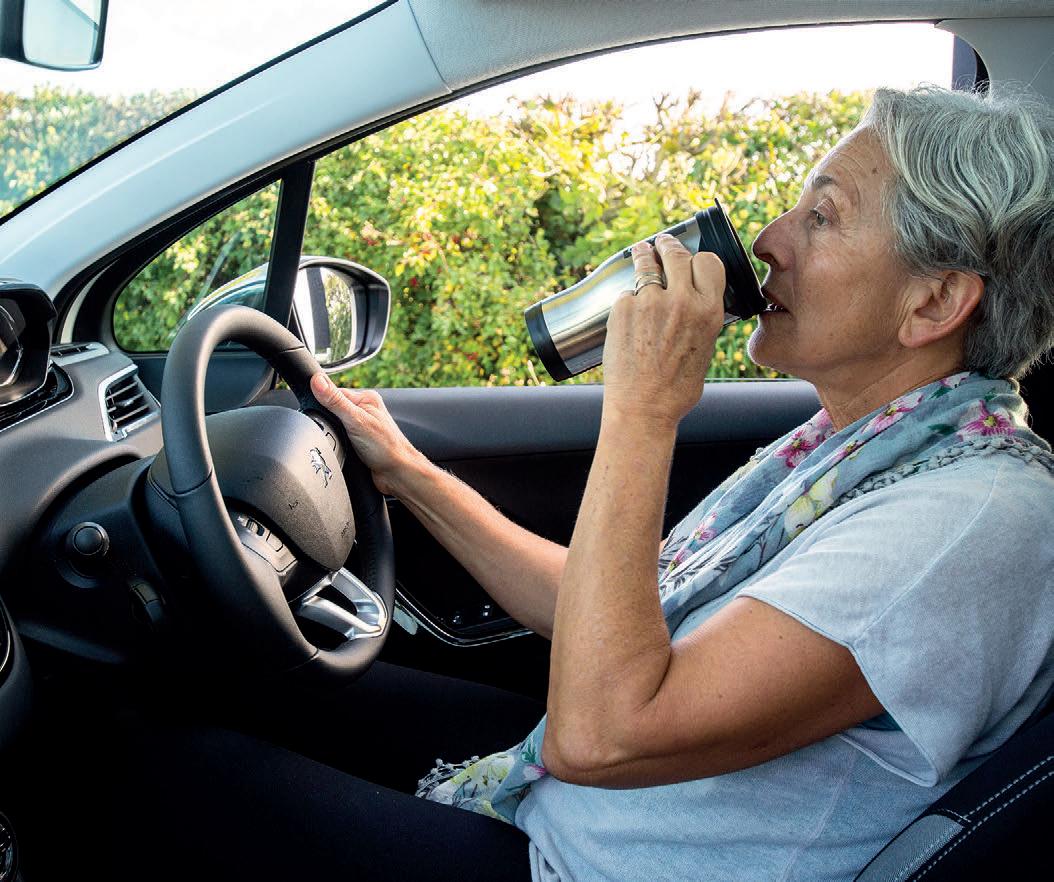
Driving while tired can be as dangerous as drink-driving. One French study found that drivers who have been drinking alcohol or who are sleepy are both twice as likely to be responsible for a collision as someone who is sober and well rested.
Being tired worsens our alertness and reaction times, but perhaps the greatest danger is falling asleep completely. Nod off behind the wheel, and you won’t brake or take evasive action. That’s why sleeprelated accidents are more likely than others to result in serious injury or death. Research suggests that one-in-five accidents on major roads are sleep-related.
You might think you can beat fatigue by winding down the window or playing loud music, but there’s only one really effective remedy – and that’s sleep. ❑
Here’s how to stay alert:
■ Get plenty of rest before you set off.
■ Avoid alcohol before a journey – just a bit can make you tired.
■ Take regular and proper breaks –include one 15-minute rest for every two hours of driving.
■ Caffeinated drinks can help boost energy, but they take 20 minutes to have an effect.
■ Avoid heavy meals before and during journeys, especially at lunchtime.
■ If you can, share long journeys with another driver.
■ If necessary, schedule an overnight stop for really long drives.
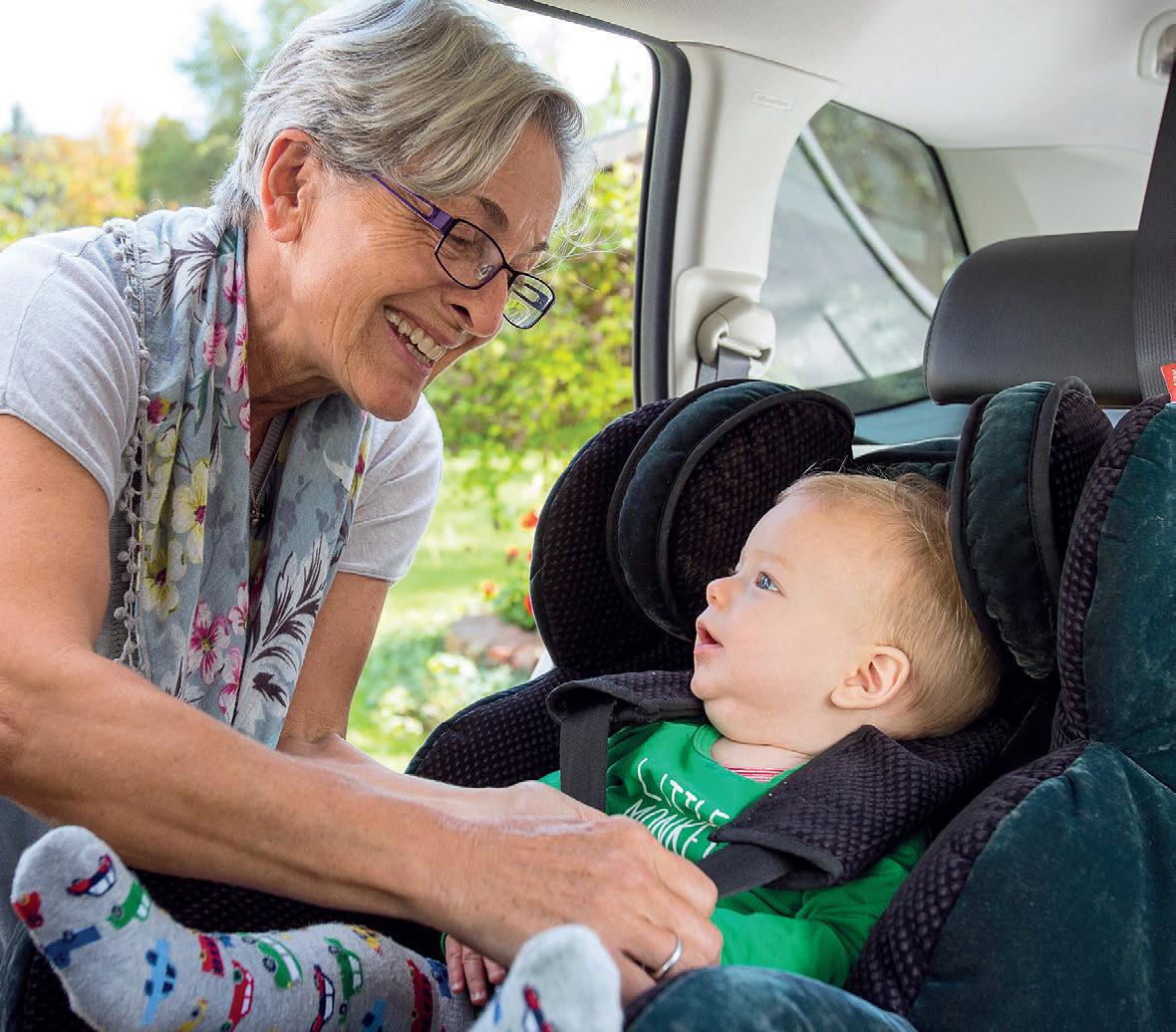
or fitted around the seat and not the child. Basic booster cushions also offer no head or side-impact protection.
Britax is urging all parents – and grandparents – choosing a Group 2-3 car seat to pick a high-back booster, which locates the upper belt better and provides additional protection for the head, especially from side impacts.
“We are calling for all parents using booster cushions to switch to a high-back booster option and help us further spread the word about the inadequate protection these cushions provide - it could save precious lives,” says Britax’s Mark Bennett.

■ For more info and to see the footage visit: www.youtube.com/watch?v=N8hlFdEH0Cc
Alcohol isn’t the only drug that impairs
driving.
Did you know that some prescription medication can be just as harmful to driving as illegal drugs or drink?
As we age, it’s more likely that we’ll need to take regular medication. While this might help keep our health in check, it can have a serious effect on our driving. So if you’re taking medication, are you still fit to drive?
The simple answer to this question is ‘probably’. However, the long answer depends on the type and/or combinations of medications you’re on.
The key thing to remember is that if you’re unfit to drive through taking prescription drugs, you can be prosecuted – it’s not all about being high on illegal drugs. Since March 2015 the law on drug driving has changed, making it an offence to drive with more than a set level of certain legal (and illegal) drugs in your system.
Taking any drug can have an effect on your driving. Before you take any medicines, check with your doctor that you’re not likely to suffer from any of these:
■ Sleepiness/drowsiness
■ Blurred vision
■ Dizziness
■ Slowed movement
The drugs that cause problems
Any medicine can lead to your driving being adversely affected. The ones most likely to have an impact include:
■ Drugs for anxiety
■ Anti-depressants
■ Products containing codeine
■ Some cold and allergy remedies
■ Tranquilisers
■ Sleeping pills
■ Pain relievers

■ Fainting
■ Inability to pay attention
■ Nausea
Is everything starting to look blurred? Are you squinting more than you used to? If so, it’s time to book an appointment...
You should be in the habit of getting your eyes tested every year. It’s normal for your eyesight to begin to deteriorate from your mid-40s, so if it’s a decade since your peepers last got a decent inspection, you may find they’re not as good as you thought.
It’s not just about being short or long-sighted though; there’s a raft of potential issues, with night-time driving being a particular problem for older drivers. The minimum amount of light needed for you to see is known as the absolute threshold and this increases as you get older. For every decade over 25, you need twice the brightness at night to receive visual information, so by the time you’re 75, you may need 32 times the brightness you did at age 25 to see properly.
Glare can also be a problem. Between the ages of 15 and 65, the recovery time from glare increases from two to nine seconds, and susceptibility to it also increases. So if you’re dazzled by a vehicle on main beam, it’ll take you longer to see clearly again – you could end up driving a considerable distance while blinded by glare.
There’s nothing you can do to prevent or slow down this deterioration, but you can mitigate it by having an annual check with a qualified optometrist who will be able to advise you on whether or not you should still be driving – and he or she will also be able to ensure you have the best possible correction for your vision, should you need it. ❑
It’s normal for your eyesight to begin to deteriorate from your mid-40s; there’s a raft of potential issues


Regular eye tests are important
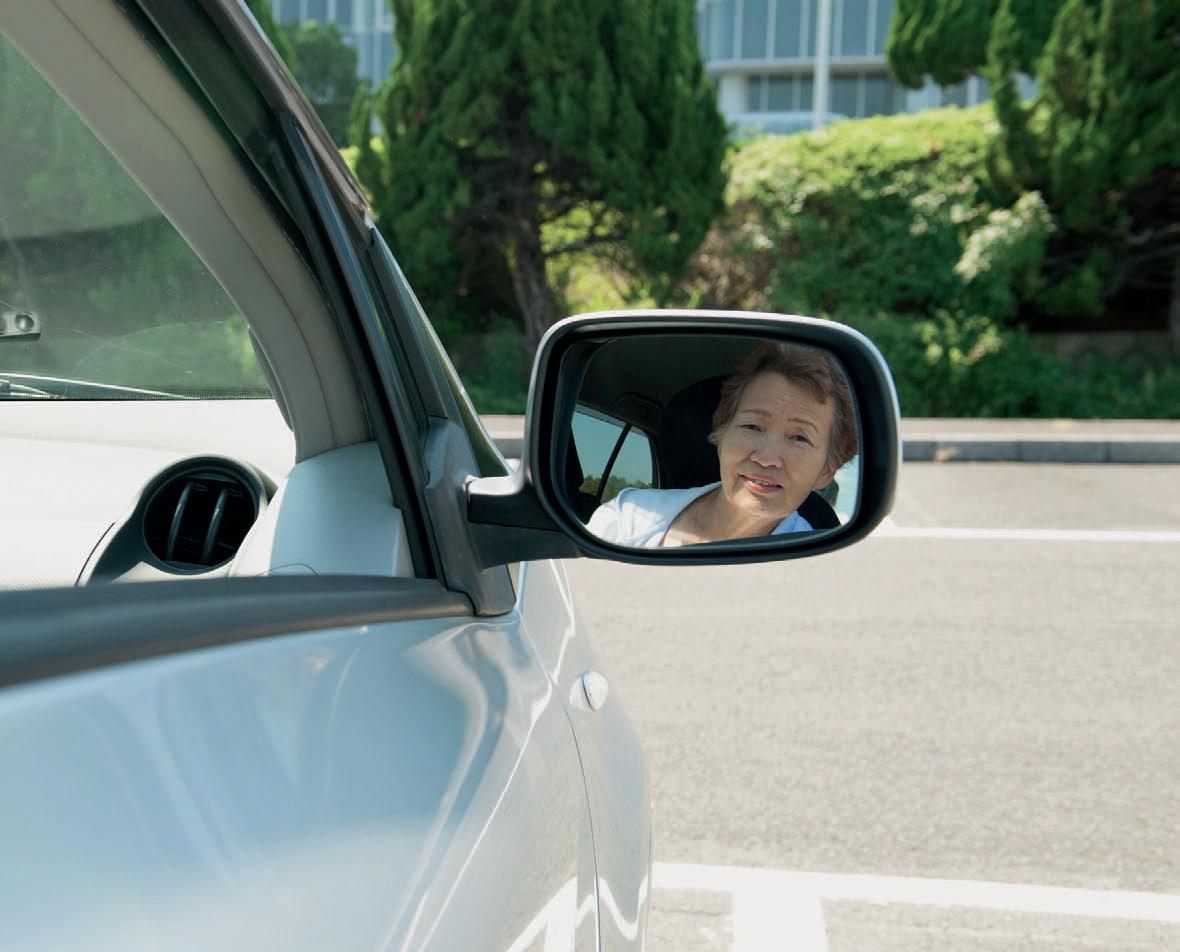

See the signs. Generally, the older we are, the closer we need to be to road signs to see them clearly. We also need them to be lit more brightly and we need to look at them for longer to process the information they’re giving us. So if we see a sign too late we have less time to make the necessary decision. It’s not just you – it’s all of us!
It’s the law. You must be able to read (with glasses or contact lenses, if necessary)
IT’S A FACT DriveOn
Driving with defective sight is an offence. Fail to meet the required standard and you could be prosecuted or have your insurance invalidated.
a number plate made after 1 September 2001 from 20 metres. You must also meet the minimum eyesight acuity standard; that’s your central vision. Your field of vision must be up to scratch, too – along with your peripheral vision.
It’s a fact. In a typical year, more than 5000 drivers have their licence revoked because their eyesight isn’t up to the required standard.
■ For the full story on driving eyesight rules, log on to the official website at www.gov.uk/driving-eyesight-rules
Blue Badge holders are exempt from the London Congestion Charge, so long as they register in advance with Transport for London.

If
you’ve got mobility problems, help is at hand – whether you’re a passenger or a driver
The Blue Badge scheme exists so that people with mobility problems and other disabilities can park nearer to essential amenities than they otherwise could. Crucially, the scheme isn’t just for drivers with mobility issues; it’s also in place to benefit passengers.
Cars displaying a Blue Badge are exempt from some parking restrictions, and they’re also able to park in designated spaces. Blue Badge holders are generally allowed to park for free at on-street parking meters and in pay-and-display bays, as well as on single or double yellow lines for up to three hours, except where there’s a
ban on loading or unloading. It’s always worth checking at a car park pay station to be sure whether free parking applies.
Some local authorities put additional restrictions on Blue Badge holders and the scheme doesn’t apply in some London boroughs, which have their own parking concessions.
If you want to apply for a Blue Badge, you can do so through your local authority, or you can do it online via the gov.uk website – just go to www.gov.uk/apply-blue-badge where you’ll find a list of what you’ll need to apply. In Northern Ireland you apply through www.nidirect.gov.uk.
Motability helps more than half a million people stay mobile and independent, many with specially converted vehicles
There’s no upper age limit to the Motability scheme. As long as you already receive one of the relevant allowances, you are eligible to apply.

You’ve probably heard of Motability, but you may not know it’s an independent charity rather than a government-run scheme. It also runs the biggest car fleet in the country, with around 650,000 people enjoying the benefits.
A registered charity that’s been going since 1978, Motability enables people to use their government-funded mobility allowance to lease a new car, scooter or powered wheelchair. The scheme works brilliantly in that you can have a new car every three years (every five if it’s a Wheelchair Accessible Vehicle), and everything is taken care of. That means
your insurance, tax, maintenance and breakdown cover are included – even replacement windcsreen cover. You’re restricted to 20,000 miles per year, but that’s double the typical UK driver’s average.
Most importantly, Motability can ensure that your car is suitable for you to use, so it can install whatever controls are needed for you to drive safely. And with around 450 different car models available, you shouldn’t struggle to find something suitable. For everything you could ever need to know about what Motability could do for you, log on to www.motability.co.uk or give them a call on 0300 456 4566. ❑
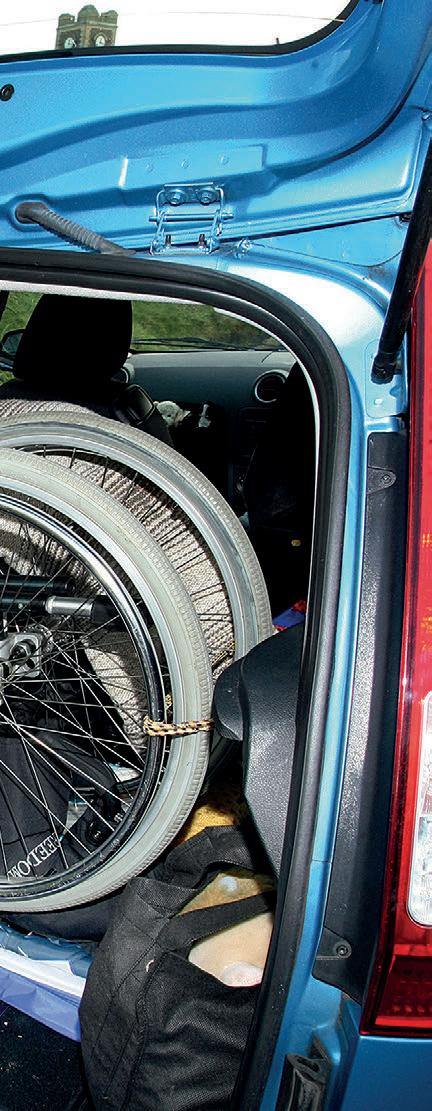
Are you eligible? IN THE KNOW
You must receive one of these benefits:
■ Higher rate mobility component of Disability Living Allowance (DLA).
■ Enhanced rate mobility component of Personal Independence Payment (PIP).
■ Armed Forces Independence Payment (AFIP).
■ War Pensioners’ Mobility Supplement. The parent of a child over three who gets one of these benefits can also apply.
Rosemary, 67, has been enjoying the benefits and freedom of Motability since it began, and has found it makes a big difference to her life. She says: “Motability has been a tremendous help to me. It’s changed a lot – there are many more makes and models available and new adaptations to make driving easier, but what never changes is the difference it makes to my family every day.
“Before we discovered Motability we had an unreliable old banger that I couldn’t drive because
it was a manual, so my husband had to drive us everywhere. I got my first Motability car when my son was a small child and having access to a safe and affordable automatic car was a godsend. I could take him to school, clubs and friends’ houses with ease. I got some of my independence back.
“Now I’m retired, we use the car for everyday tasks and getaways. We’ve been able to travel around the country in confidence and comfort, knowing my ‘legs’ are waiting outside for me!”
Motability has changed a lot, but what never changes is the difference it makes
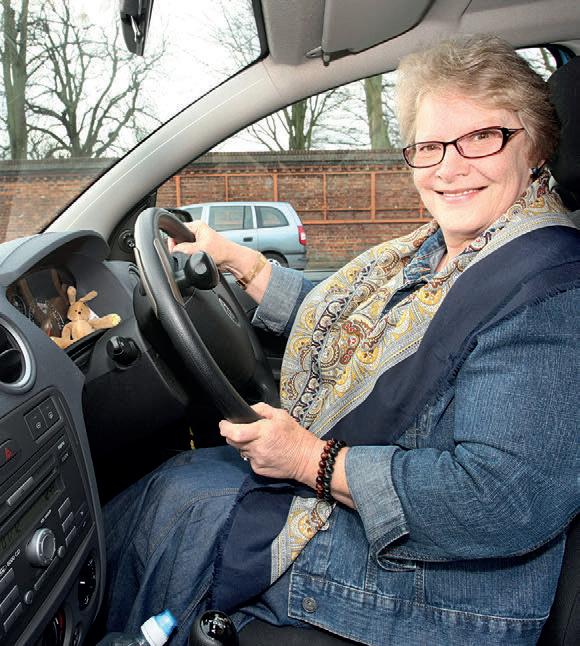
Rosemary couldn’t imagine life without her Motability car
Deciding whether or not to continue driving isn’t easy. But ending your driving career doesn’t mean giving up your independence altogether

With good health and a careful attitude, it’s possible to drive well into old age. But none of us want to continue driving if we’re no longer safe behind the wheel. Older drivers may have a lifetime of experience to fall back on, but slower reactions, reduced dexterity, failing eyesight and other health problems can hinder our ability to control a car
safely and deal with hazards.
Deciding to stop driving isn’t easy, although the checklist opposite will help. If you do decide your driving days are over, it’s important to remember this doesn’t have to mean the end of your independence, especially if you live somewhere that’s well served by public transport.
Anyone old enough to claim a state pension is entitled to free off-peak bus
Are you still a confident driver?


Most bus passes are used for short journeys like popping to the shops for a sliced loaf. But John Motton’s bus pass has really clocked up the miles, including a trip from his home in Folkestone, Kent to Land’s End.
“The leaflet that came with the bus pass said to use it and enjoy it,” says John, 76. And that’s exactly what he has done.
“I’ve read about other people making long journeys with their bus passes, and I thought travelling all
the way along the south coast seemed like quite an adventure.” So John and his wife, Christine, started to plan their 350-mile journey.
“We decided that we would do it three nights at a time so we didn’t have to take too much luggage.” John and Christine made use of discounted travel on the railways and the National Express coach network to get home, and then to travel west
to restart their bus journey again a few weeks later.
“We visited lots of interesting place along the way,” John says. “On a bus you can just sit back and enjoy the ride.”
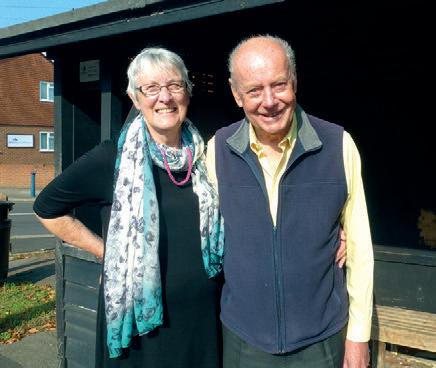
Need more help deciding whether to continue driving?
GEM Motoring Assist has lots of advice on its dedicated website for older drivers, www.stillsafetodrive. org.uk
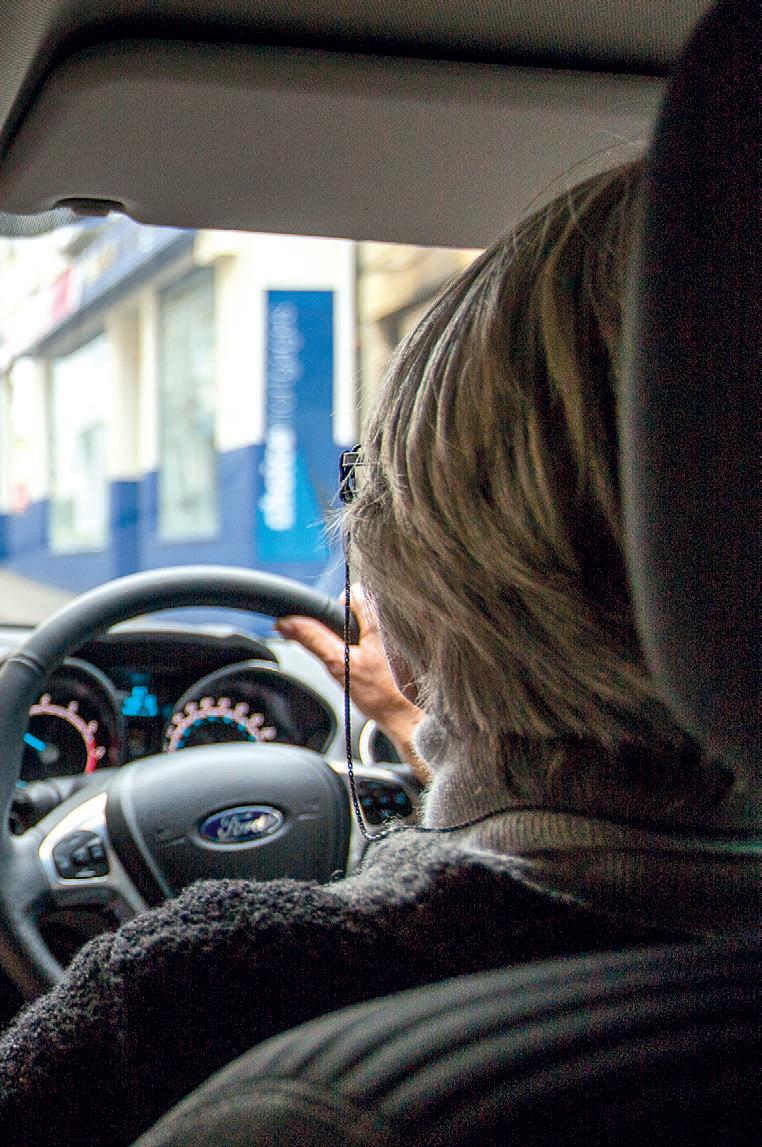
Deciding whether or not to continue driving doesn’t mean giving up your independence
at any time so long as they have a pass. If getting to the bus stop is a struggle, many local authorities operate ‘Dial-a-Ride’ services for the elderly and people with limited mobility. You make a phone call and a minibus is sent to collect you. Taking the train can be a less stressful way to cover long distances than driving. Anyone over 60 can buy a senior railcard which gives a third off most railway fares in England, Scotland and Wales. A one-year card costs £30, and a three-year card £70. After a few trips to visit the grandchildren the card should more than pay for itself.
❑ Talking about giving up driving is awkward. It’s not easy for the senior driver, or for the friend or relative who feels the time has come to persuade someone to hang up their car keys for good. It’s a conversation to be approached carefully.
❑ If someone brings up the subject, don’t be defensive. Remember, it’s difficult for anyone to criticise a loved one’s driving, and if they’re prepared to risk your feelings they are doing so because they are concerned for your safety. Listen to their reasons.
❑ Maybe you are the one who wants to persuade a friend or relative to stop driving. Do so with respect and tact, and emphasise that your main concern is their safety. Point out the advantages, such as the money saved, and help them consider alternative ways to get around.
If you don’t live close to a bus stop or train station, getting about without a car won’t be so easy, but don’t forget you’ll be saving a lot of money if you stop driving. With no finance, insurance, fuel or servicing to pay for, you could be thousands of pounds better off. Driving 5000 miles a year in a new petrol car worth £13,000 costs £2817 per annum, according to the AA. That’s money that could be put towards a mobility scooter or regular taxi rides. Stopping driving doesn’t have to be the end of the road; it just means finding other ways to get around. ❑

Finding the ideal car takes time, and our needs tend to change as we get older. Do plenty of research and don’t let anyone rush you into a hasty choice
Buying a car is a big decision. It’s a choice most of us have made many times before, but some of the things to consider tend to change as we age.
Drivers young and old need to think carefully about their budget, and whether or not a car offers enough space. But as we grow older and develop the odd ache
and pain it becomes doubly important to make sure a car is comfortable to sit in. Many drivers find cars with a high-up seating position (such as an MPV or a crossover) are easier to get in and out of. Also, pay close attention to how easy it is to operate the controls. If your fingers aren’t as nimble as they used to be big buttons
will be easier to use than fiddly little switches.
Perhaps until you retired you ran a diesel-powered car. If you’ve cut back on your mileage since you stopped work, a diesel may no longer be the best choice. Petrol cars generally cost less to buy, and are better suited to short journeys than modern diesels.
The public charging network is often criticised, but according to Zap-Map there are now just over 57,000 chargers in more than 32,000 locations.
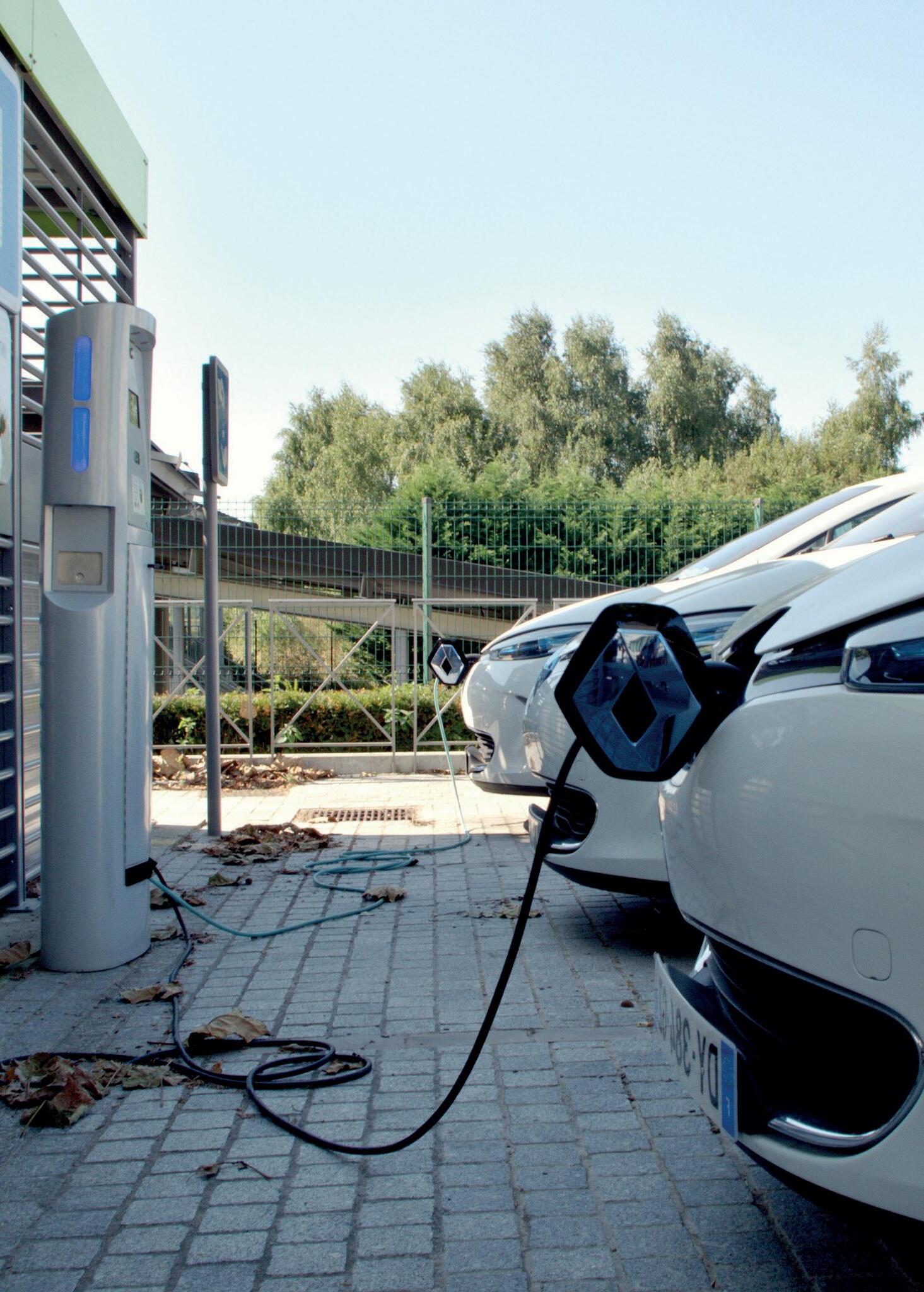
The pros and cons of EVs explained Electric cars: time to switch?
Electric cars have become hugely popular in recent years, and now account for more than one in ten cars old in Britain. But not everyone is enthusiastic about switching from petrol or diesel to electric power. One recent survey by Which? found that only 23% of people aged 65 or over intend to buy an electric vehicle (EV) in the future, compared with 56% of those aged 18-24.
Is the more mature generation right to be cautious? What are electric cars really like to drive and live with?
Are electric cars hard to drive? No. In fact one of the great advantages of an EV is just how easy it makes life for the driver. There’s one forward gear and one reverse gear, and every electric car is an automatic, so there’s no clutch pedal or gearchanges to worry about.
Some aspects of driving an electric car do take some getting used to, though. Electric cars use regenerative braking to top-up the batteries when slowing down. Some EVs, such as the Nissan Leaf, have a one-pedal driving mode. This makes the regenerative braking strong enough to drive using the accelerator alone in most circumstances, as backing off the throttle slows the car down sufficiently to make applying the brake pedal unnecessary.
This is something of a love-hate feature, so you
can normally reduce the strength of this braking effect to make the car feel more like a regular automatic if you prefer.
How expensive are electric cars? They do tend to cost more than an equivalent petrol or diesel. At the time of writing (spring 2024), new prices start from around £8000 for a two-seater Citroën Ami, while the larger MG4 is around £26,000.
There are more and more electric cars on the used market. You can pick up a Nissan Leaf Mk1 for £2500 or so.
Will I save money on fuel? If you have space to install a home charger on your driveway or in a garage, then yes. Charging overnight on a special EV-owner tariff could cost as little as 10p per kilowatt hour (kWh) of electricity. That means a full charge for a 77-kilowatt battery would cost £7.70. Assuming a realworld range of 250 miles, that’s an electricity cost of just over 3p per mile. Based on a price-per gallon of £6.74, a petrol car capable of 50mpg would cost £33.70 to go the same distance.
However, the cost of recharging is greater during the day, even at home, while using a public charger could cost 75p per kWh or more. So if you can’t charge at home it’s tougher to make the sums add up.
What about range? If the budget stretches to a brand
Are electric cars really green?

More carbon dioxide is produced in manufacturing an electric car than one with an internal combustion engine, but they are greener in use. According to Volvo, its C40 EV is responsible for less CO2 overall once it has covered 48,000 miles.
new electric car, many have an official range of 250-300 miles. However, range drops in cold weather.
Do the batteries degrade? Yes, just like the batteries in phones and laptops, the batteries in electric cars lose capacity over time. According to Geotab, a company providing telematics services for company car fleets, over sixand-a-half years a battery will degrade by around 13.5%. That would reduce a 250-mile range to 216 miles – plenty for many drivers.
So, is it time to change?
An electric car won’t suit everyone, but if you have somewhere to charge at home they are cheap to run and very easy to drive. ❑

Many 70-year-olds have half a century of driving experience under their belt, but that doesn’t guarantee a great deal on car insurance
You deserve a pat on the back. If you are reading this, the chances are you are over 65 and have probably been driving for nearly 50 years, perhaps more. You would think all that experience would be rewarded with cheap insurance premiums. Unfortunately the reality isn’t so rosy. Other risk factors increase as we age, with slower reactions and other health problems offsetting the benefit of all those years behind the wheel, at least in the eyes of many insurance companies.
Some big-name insurers start to lose interest in people over 65, and finding cover gets more difficult again once you reach the age of 75.
But it’s not all doom and gloom. Competitive cover is out there if you know where to look. On the next page we list some easy steps you can take to keep the cost of insuring your car affordable. With the right car, the right insurer and the right kind of policy, you should be able to find high-quality cover at a fair price. ❑

Park your car on level ground and let it cool. Dig out the handbook then do these basic checks:
With the ignition on, check the headlights and rear lights, including main beam. Do the same for the indicators. If alone, check the brake and reversing lights by reversing towards a wall and looking for the reflection.
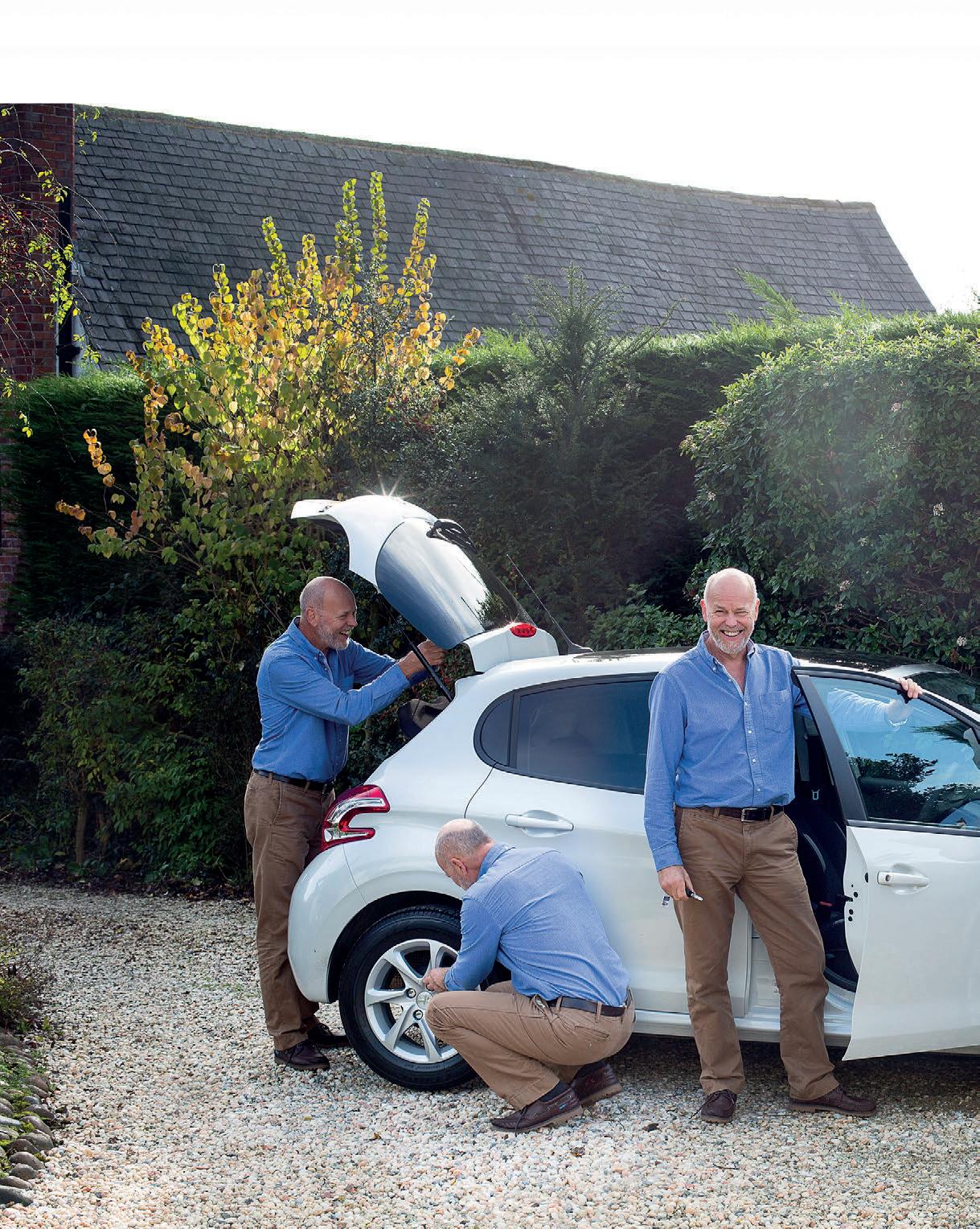
Your engine and radiator contain coolant to stop overheating. Most cars have an opaque plastic coolant expansion tank containing a coloured liquid (green, pink, orange or purple), with the level sitting between the minimum and maximum marks. If it needs topping up, add anti-freeze so the coolant doesn’t become too dilute. Topping up shouldn’t be necessary; if needed, there may be a bigger problem.

Your car’s brakes work hydraulically; the fluid in the system activates the brakes at each wheel. Brake fluid absorbs water over time, which is why it must be replaced every two years. A dropping level suggests leaks in the system. The reservoir is mounted under the bonnet, below the windscreen. Don’t remove the cap; just rock the reservoir gently so you can see the fluid move. It shouldn’t be below the minimum mark.


Well oiled
Let your engine run out of oil and it won't be long before the whole thing is wrecked. That's why you must ensure there's always enough oil in your engine. It takes just a couple of minutes; here's how.
❏ Park on level ground and switch off the engine.
❏ Open the bonnet and leave the car for five minutes.
❏ Pull the dipstick out.
❏ Wipe the dipstick clean.
❏ Push the dipstick all the way in.
❏ Pull the dipstick back out. Towards the bottom are two markings. The oil level should be between these; if there's no oil showing at all, the engine will soon be wrecked.
❏ If the oil on the dipstick is below the bottom line, add a small amount of oil.
❏ Add oil by unscrewing the oil filler cap, on top of the engine.
❏ Using the correct type of oil (check the handbook), top up the level.
Check the tyres are inflated to the correct pressure, and be sure there’s plenty of tread left. The law states that there should be at least 1.6mm of tread across the central three-quarters of the tyres all the way around. However, wet weather stopping distances in the
wet increase long before this level of wear. Research by Tyresafe.org has shown that a car with barely legal tyres needs a further 11.9 metres to stop from 50mph on wet roads than the same car with brand new tyres. That’s around three whole car lengths.
❏ Check the level again and add more if necessary.
❏ Replace the oil filler cap and dipstick.
❏ Ensure the dipstick is back in place as well.

Nobody wants to crash, but if you do, make sure you’ve got this page handy, along with a pen and sheet of paper. If it all goes pear-shaped, just follow the instructions.
■ Stop and warn other road users of the incident. If anybody has failed to stop, take their registration number or a description (make, model, colour). Even just a partial registration number may be of use.
■ Switch on your hazard lights and, if possible, move the vehicles to a safe place. Assess any injuries and offer first aid if you can. If anyone has been injured, contact the police or ambulance service straight away.
Date: Time:
Weather conditions (low sun, foggy, raining, sunny):
Road conditions (wet, dry, muddy):
Road where accident occurred:
Brief description of what happened, using a diagram if it helps:
Registration:
■ Call the police if there’s debris on the road or an obstruction to traffic; don’t put yourself in danger making the crash scene safe. Call the police if any other driver is aggressive or uncooperative.
Note: If more than one other vehicle is involved, make sure you collect their details too.
Make & model:
Driver’s name: Description of driver:
Number of occupants in car: Driver’s contact number:
Car’s insurer: I nsurer’s contact number: Policy no:
Colour:
YOUR DETAILS:
Fill this section in right away, so in the event of an accident, you can simply tear it out and hand it over.
Name: Contact number:
Car registration:
Make: Model: Colour:
Insurer: Policy no:
Insurer’s contact number:
I confirm that all details on this sheet are to the best of my knowledge, correct and accurate:
You: Other driver:
Signed: Signed:
Date:
Date:
■ Don’t admit liability – even if you think it was your fault. If you do, it’ll only cause problems later on.
■ Don’t put yourself in danger to make the area safe – call the police and stay out of the way of any moving traffic.
■ Don’t leave any valuables in your car if you have to leave it at the scene – damaged cars are often looted.
■ Take photos of the scene, the cars involved and any other damage – photograph from every angle you can.
■ Contact the police – even if you think the accident is only minor, they will have it on their records if any dispute arises.
■ Contact your insurance company as soon as possible after the accident – and certainly within 24 hours.
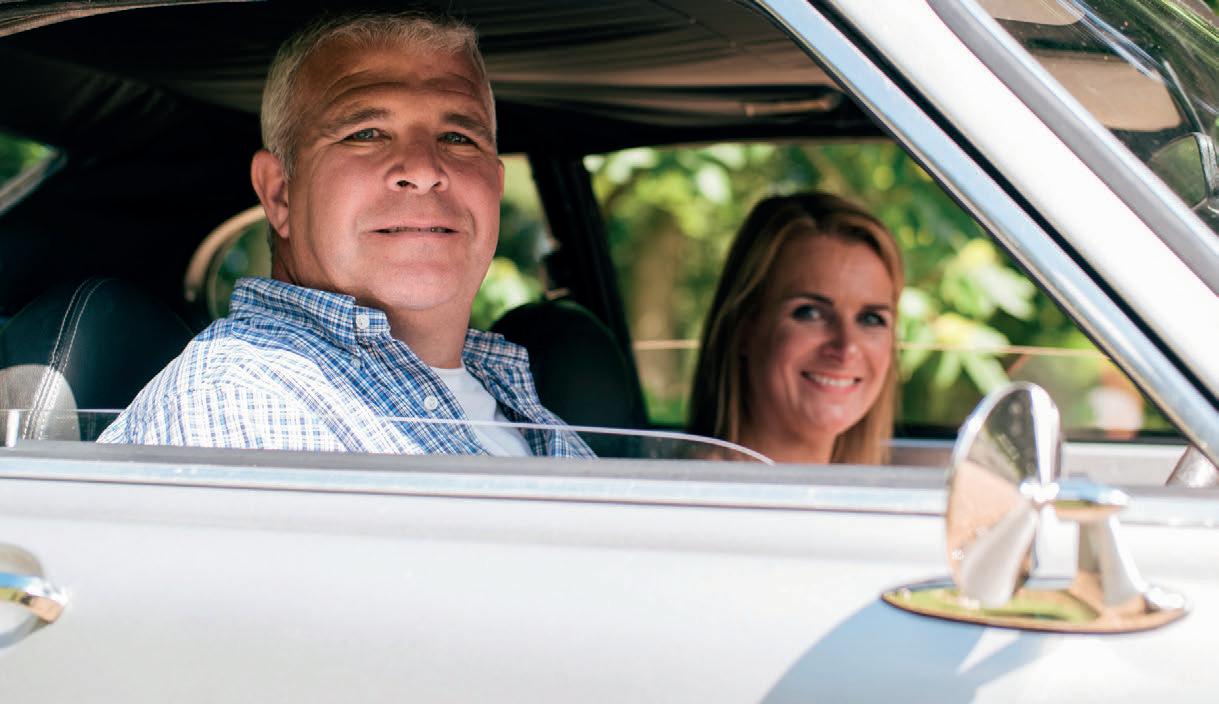
fuss, no
Mature driving insurance from as little as £289
We know mature drivers are statistically safer on the road than younger drivers, that’s why Sterling are able to offer tailored insurance deals at a lower price for over 60’s starting at £289, so you can relax and enjoy your time on the road with little worry. So why not call one of our leading experts today?
Benefits of getting a policy with Sterling
check Prices start from £289
check UK call centre with friendly staff
check Free legal protection up to £100,000
check Free European cover for up to 90 days
check Claims hotline open 24/7
check Breakdown cover, keycare, misfuelling (optional extras)
check Online portal to service your documents or sent in the post, you choose!